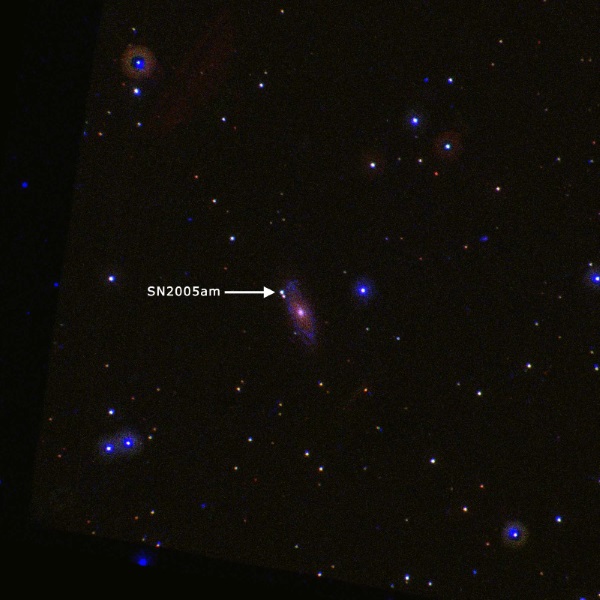Bright Lights In Those Big Skies
We know full well that the nature of science is to explore through various means and increase in knowledge. Ideally, theories and models are modified if needed, or even discarded. The more we learn, the more there is to learn — but even when data conflicts with secular worldviews, the worldviews prevail. Astronomy and space exploration show this extremely well.
Remember when there were seven planets in this solar system? Of course you don't, the eighth planet, Neptune, was officially noted in 1846. Pluto became the ninth planet in 1930, but with bigger and better telescopes, it was downgraded to "dwarf planet" status in 2006. Once Pluto was "visited", scientists were surprised. This is right in keeping with the way other members of our solar system were shown to be active, not acting as old as secularists expected them to be.
There's a heap of evidence against the Big Bang, but it's constantly cobbled and patched together to keep going. After all, we can't admit that there's a Creator, now, can me? That would allow a divine foot in the door; das ist streng verboten. There are stars, galaxies, clusters of galaxies, superclusters lighting up the big skies. And they were moving. A "Great Attractor" was proposed to explain their motion, but that fell out of favor. More galaxies have been discovered, and our Milky Way is mapped in a supercluster according to "Collective Evolution". Also, Nature discusses the galaxies and superclusters, clinging to the Big Bang and citing the fiction that unobserved "dark matter" is observed. They just kinda slip that in there to keep the sheep docile.
When a star explodes, it's called a nova. When bigger stars collapse and explode, they call that a supernova. A second type of supernova has been discovered. Wait, there's more! Astronomers are talking about a hypernova, very bright, very powerful, and they don't have a handle on what's going on with that one. These secularists are making conjectures (a natural thing to do), but they could use a dose of humility, what with not only trying to explain the universe without God, but also keep acting like they have things all figured out. With a proper worldview, they'd be a mite less surprised by their discoveries.
Their Big Bang and cosmic evolution paradigm gets further humbling by something that puts out a lot of energy, and they just can't figure it.
Remember when there were seven planets in this solar system? Of course you don't, the eighth planet, Neptune, was officially noted in 1846. Pluto became the ninth planet in 1930, but with bigger and better telescopes, it was downgraded to "dwarf planet" status in 2006. Once Pluto was "visited", scientists were surprised. This is right in keeping with the way other members of our solar system were shown to be active, not acting as old as secularists expected them to be.
There's a heap of evidence against the Big Bang, but it's constantly cobbled and patched together to keep going. After all, we can't admit that there's a Creator, now, can me? That would allow a divine foot in the door; das ist streng verboten. There are stars, galaxies, clusters of galaxies, superclusters lighting up the big skies. And they were moving. A "Great Attractor" was proposed to explain their motion, but that fell out of favor. More galaxies have been discovered, and our Milky Way is mapped in a supercluster according to "Collective Evolution". Also, Nature discusses the galaxies and superclusters, clinging to the Big Bang and citing the fiction that unobserved "dark matter" is observed. They just kinda slip that in there to keep the sheep docile.
 |
| Image of supernova 2005am taken by Swift Ultraviolet/Optical Telescope Image credit: NASA, who would in no wise endorse this content. |
Their Big Bang and cosmic evolution paradigm gets further humbling by something that puts out a lot of energy, and they just can't figure it.
The most spectacular supernova ever detected has astrophysicists scratching their heads for a mechanism.To brighten your day, read the rest by clicking on "Small Thing Make Big Boom". It's humbling, even to those of us who know our Creator on a first-name basis.
Type 1a supernovas (or supernovae to geeks) are pretty well characterized. Theory says that when material from a binary companion flows onto a white dwarf, it will explode when it reaches a critical mass with a flash that should be about the same in all cases. That allows them to be used as a “standard candle” for measuring distances in space. It’s the standard story, at least, although there are problems.
But then there are supernovas that are off the charts. So-called “superluminous supernovae” require a different explanation. One theory for these much brighter explosions is that they come from magnetars—neutron stars with exceptionally strong magnetic fields, quadrillions of times stronger than the one surrounding Earth. One theory suggests that energy from the magnetar impacts the expanding supernova remnant from which it formed, brightening it substantially.
That theory has now come into doubt with the discovery of ASASSN-15lh, a supernova that was so bright, it didn’t even fit into the scale of 1 to 10: